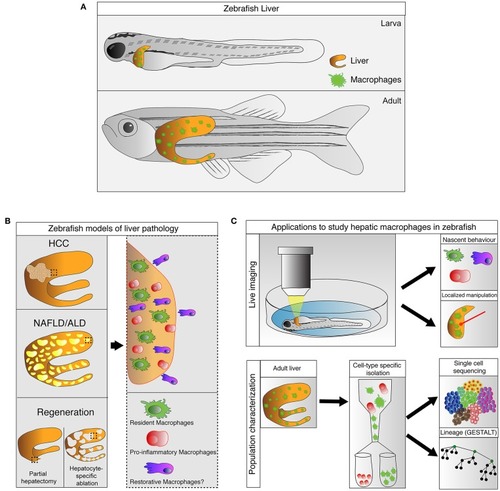- Title
-
Macrophages in Zebrafish Models of Liver Diseases
- Authors
- Shwartz, A., Goessling, W., Yin, C.
- Source
- Full text @ Front Immunol
|
Zebrafish, an emerging model for study hepatic macrophages. |
|
Acute ethanol treatment causes hepatic steatosis and increases macrophage numbers in larval zebrafish. |


